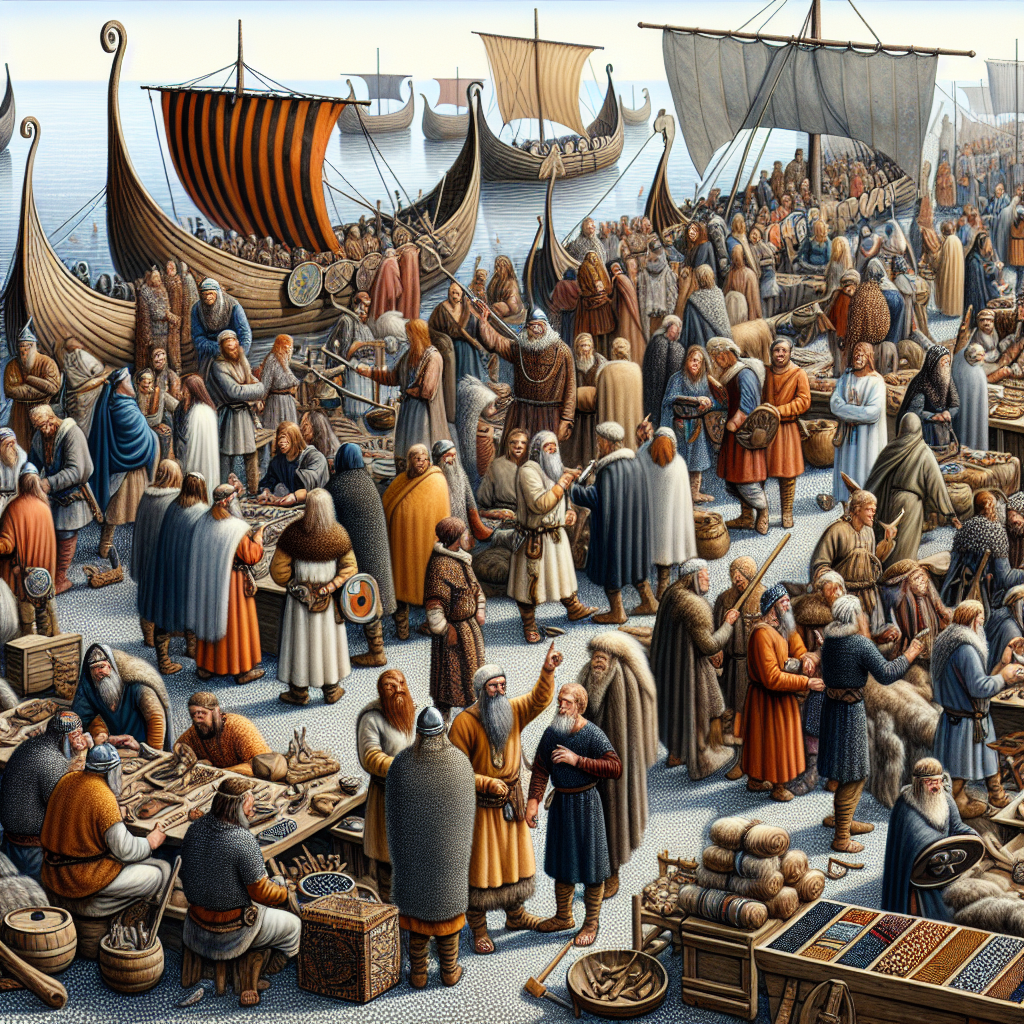Trade and Commerce in the Viking Age: Exploring a Thriving Economy
The Viking Age is often romanticized for its daring raids and fearless warriors, but behind the battle sagas lies a story of a dynamic economy. The Vikings were not just raiders; they were savvy traders and skillful merchants. Let’s sail back in time to explore the thriving trade and commerce that played a crucial role in the Viking society.
The Foundations of Viking Commerce
The Viking Age spanned from roughly 793 to 1066 AD, a period marked by significant economic development. The Nordic regions, despite their harsh climates, were bustling with activity due to their strategic locations. The Vikings leveraged their maritime prowess to navigate the extensive network of trade routes, connecting Northern Europe with distant lands.
Key Trading Hubs
Several Viking trading centers emerged as key nodes in their economic network. The most notable among these were:
- Birka (Sweden): One of the earliest urban centers in Scandinavia, Birka was a crucial point for trade in the Baltic region.
- Hedeby (Germany): Located at the border of modern-day Germany and Denmark, Hedeby was a melting pot of cultures and goods.
- Jorvik (York, England): This Norse name for York highlights its significance as a Viking trading hub in the British Isles.
Goods on the Move
So, what did the Vikings trade? Their bustling markets were filled with a wide variety of commodities. Here are some of the most prominent:
- Furs and Skins: Nordic furs were highly sought after across Europe and beyond.
- Amber: The “gold of the North,” amber from the Baltic Sea, was a luxurious item traded widely.
- Iron and Weapons: Considering their reputation as warriors, it’s no surprise that finely crafted weapons and iron goods were significant trade items.
- Slaves: Sadly, the trafficking of slaves was also a grim part of Viking commerce.
International Connections
The Vikings didn’t just stick to local or regional trade; their longships took them far and wide. They established robust trade connections as far afield as:
- Byzantine Empire: Norse traders and Byzantine merchants regularly exchanged goods, blending Nordic and Eastern influences.
- Islamic Caliphates: The Vikings reached the Middle East via the Volga trade route, bringing back exotic goods like silk and spices.
- North America: With their voyages to Vinland, the Vikings even opened channels to the New World long before Columbus.
Economic Impact on Viking Society
The impact of trade and commerce on Viking society was profound. It led to:
- Urbanization: The influx of wealth from trade spurred the growth of towns and settlements.
- Cultural Exchange: Interaction with diverse cultures brought new ideas, technologies, and artistic influences to the Nordic regions.
- Social Stratification: As trade prospered, a class of wealthy merchants emerged, influencing the social hierarchy.
Conclusion
The Viking Age was much more than a legendary era of warriors and raiders; it was a time of remarkable economic activity and commercial ingenuity. The Vikings established vast trade networks, exchanged a diverse array of goods, and played a pivotal role in connecting far-flung regions. Their legacy in trade and commerce is a testament to their adaptability, resilience, and entrepreneurial spirit.
So next time you think of Vikings, remember that beneath those horned helmets (which, fun fact, they probably didn’t wear), were shrewd merchants steering the course of a vibrant economy!
Stay tuned for more fascinating insights into the world of Viking trade and commerce. Skål!
